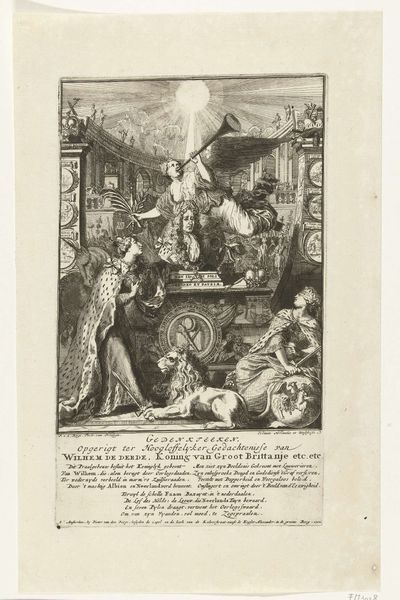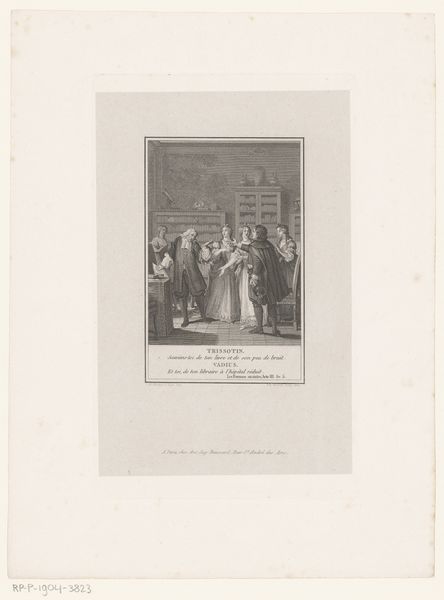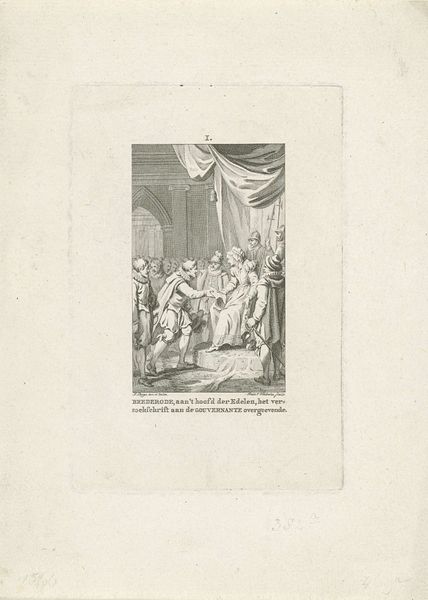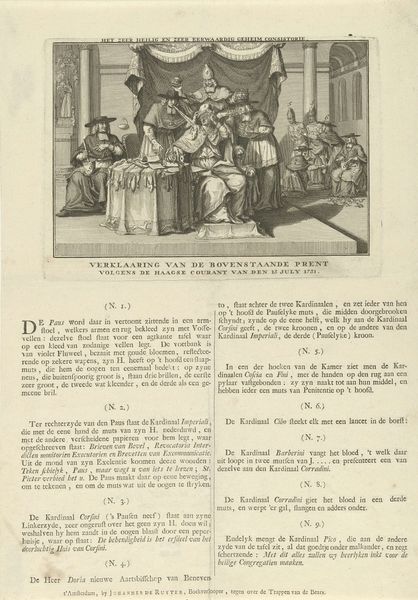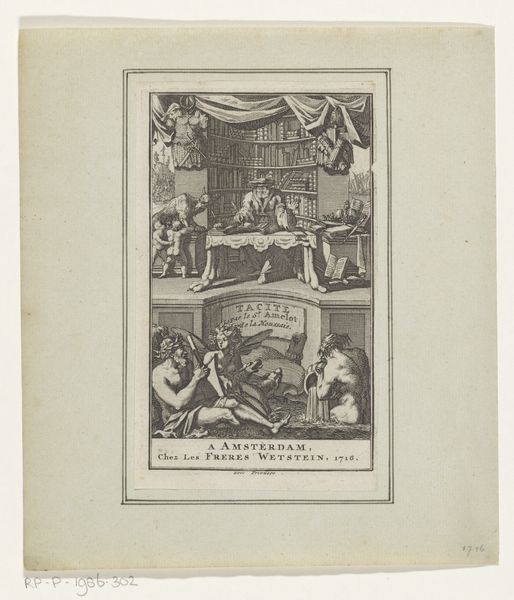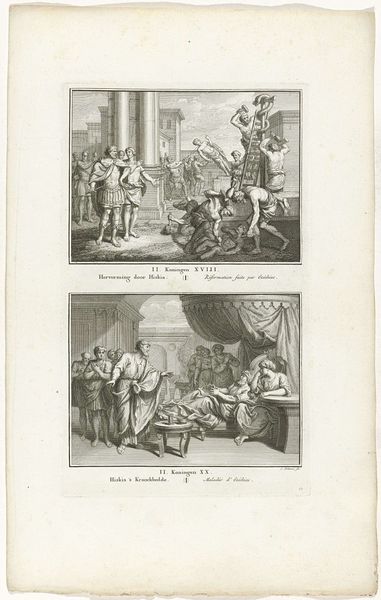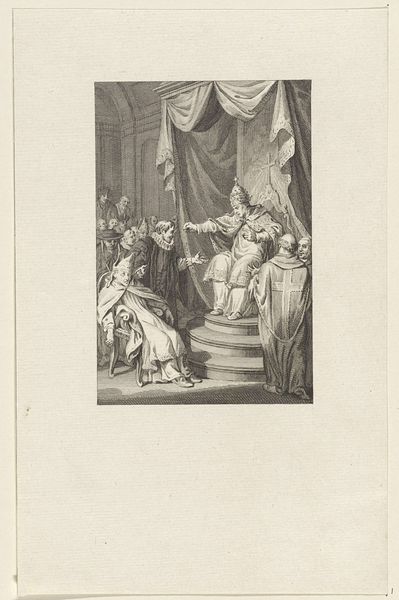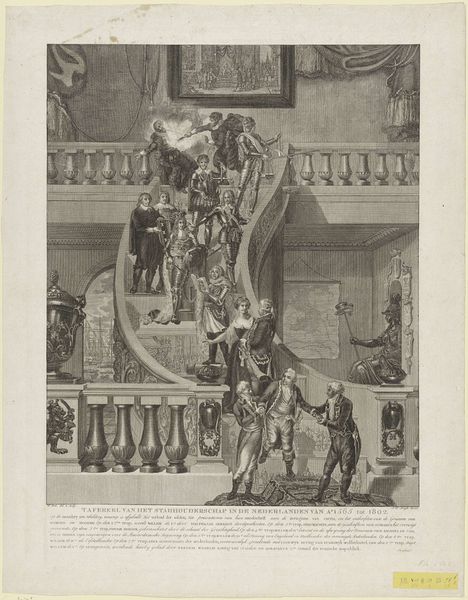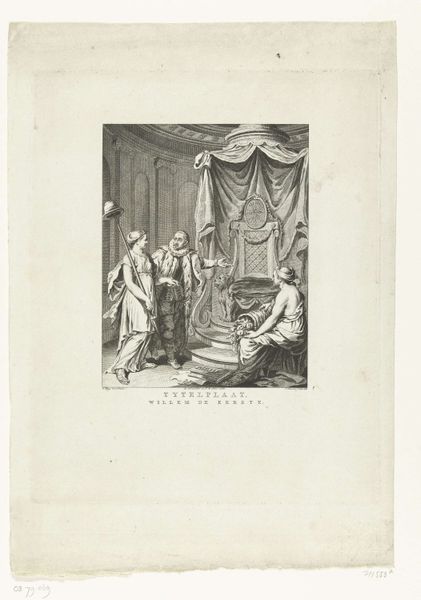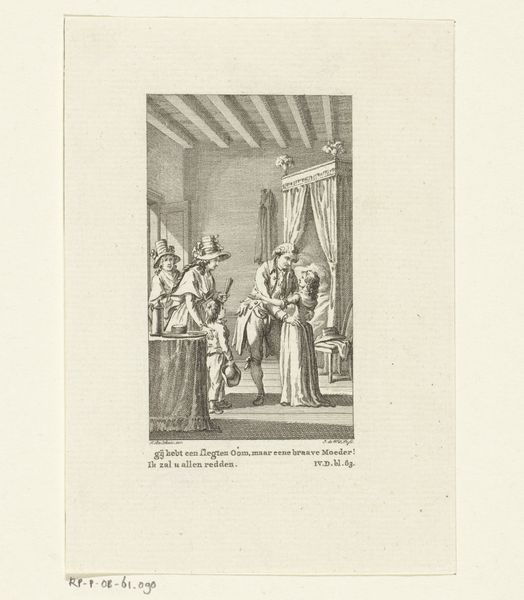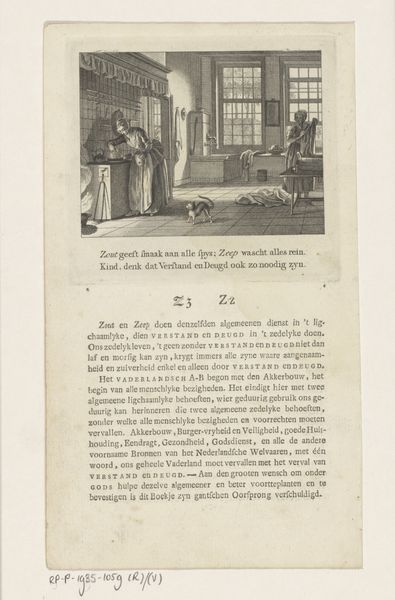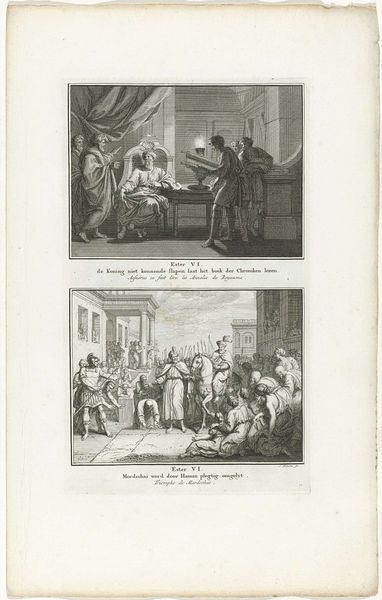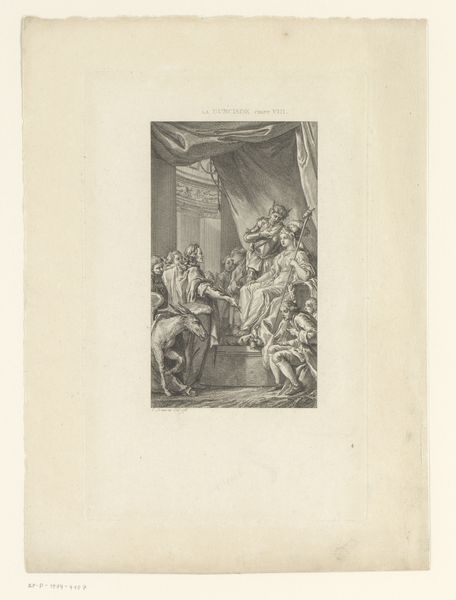
print, engraving
#
allegory
#
narrative-art
#
baroque
# print
#
caricature
#
figuration
#
social-realism
#
line
#
islamic-art
#
history-painting
#
engraving
Dimensions: height 149 mm, width 239 mm, height 364 mm, width 254 mm
Copyright: Rijks Museum: Open Domain
This anonymous print, made in 1731, depicts the Devil on the Papal throne, crafted with etching. The process involves coating a metal plate with wax, drawing through it with a sharp needle, and then bathing the plate in acid. This creates incised lines that hold ink, allowing the image to be transferred onto paper. The fine lines achievable with etching enable intricate details, seen here in the rendering of textures and tones. The linear quality emphasizes the overall satirical and critical tone, highlighting the contrast between the image of the Devil and the surrounding ecclesiastical figures. Etching, as a method of image production, was well-suited to the dissemination of political commentary during the 18th century. This allowed for relatively quick and inexpensive reproduction of images that could reach a wide audience, influencing public opinion and challenging authority, and blurring the boundaries between art, social critique, and popular culture.
Comments
No comments
Be the first to comment and join the conversation on the ultimate creative platform.
